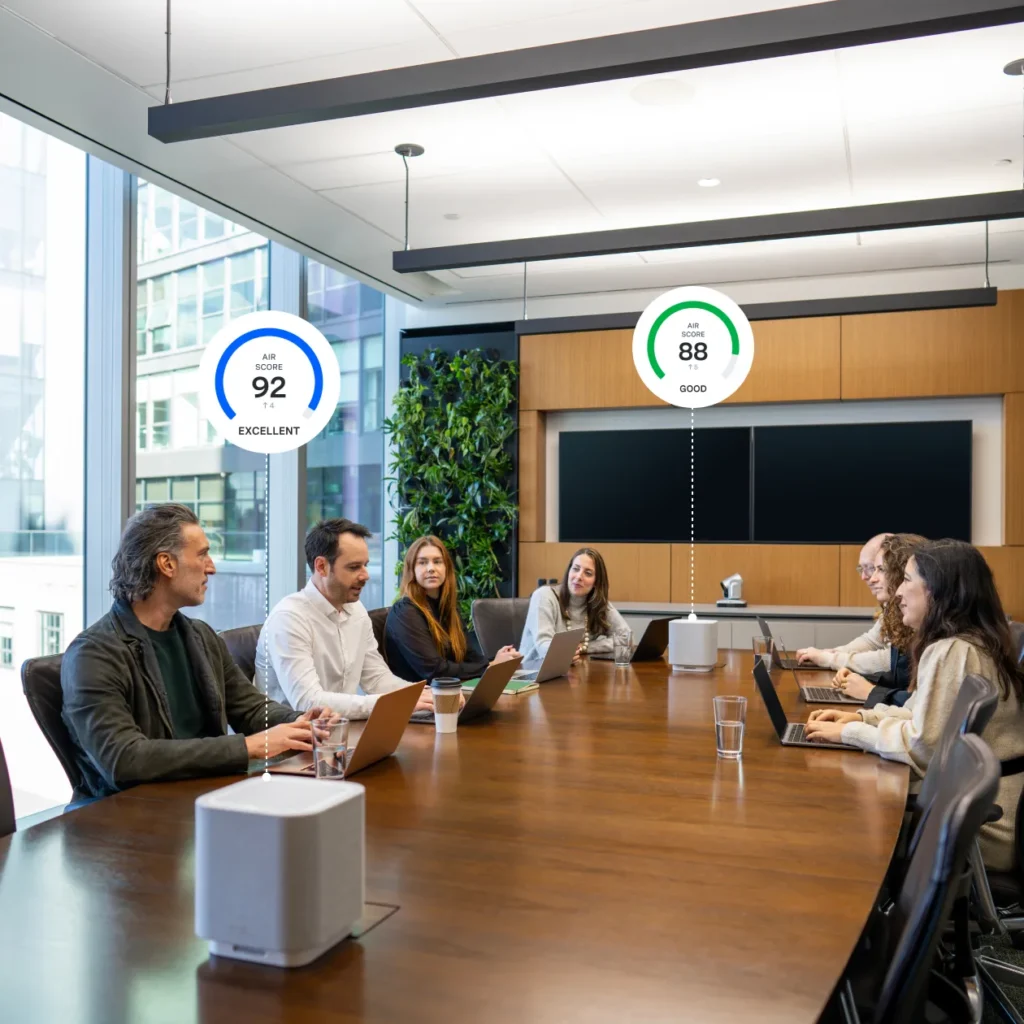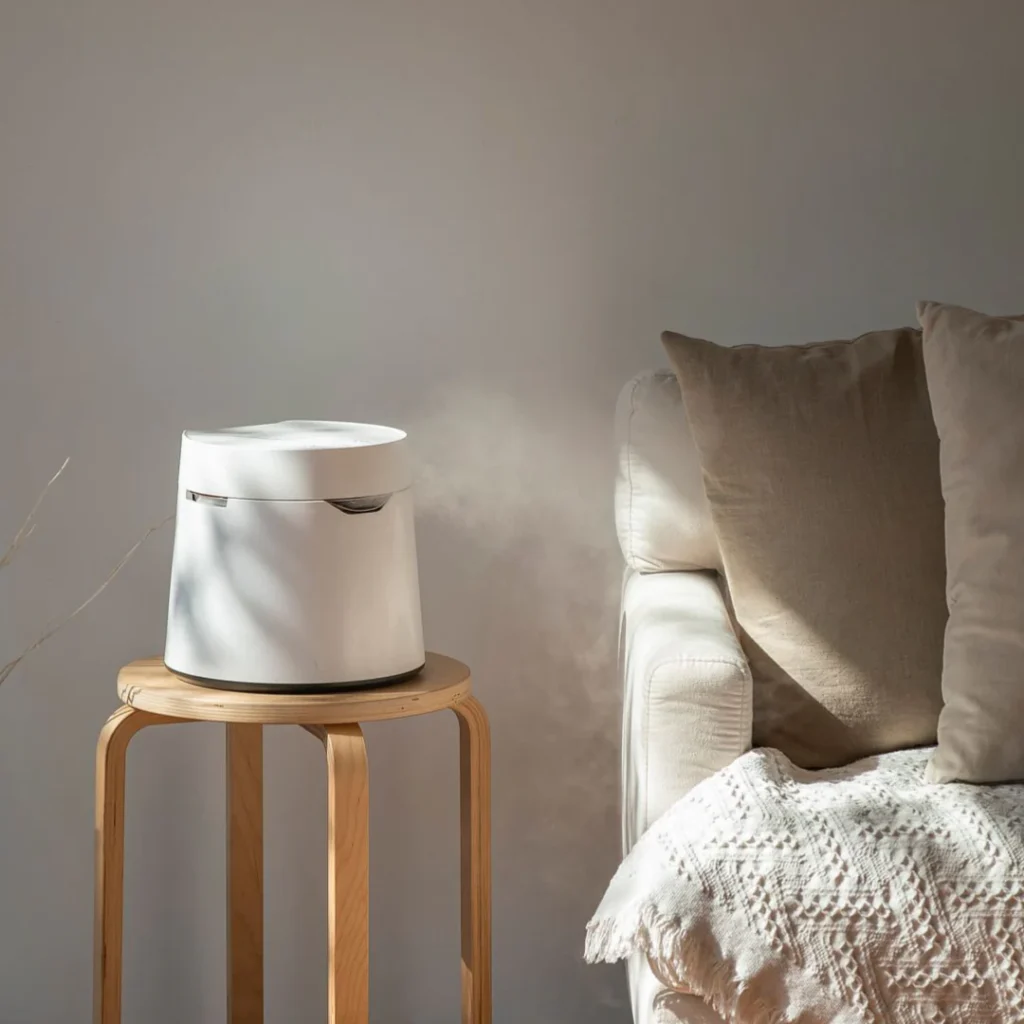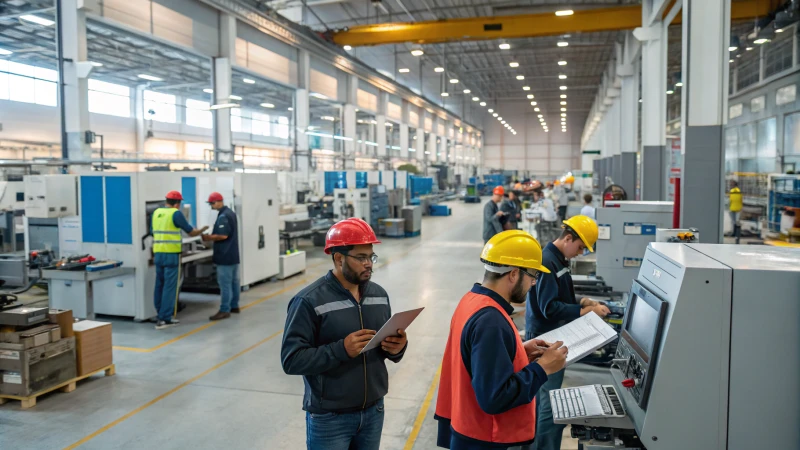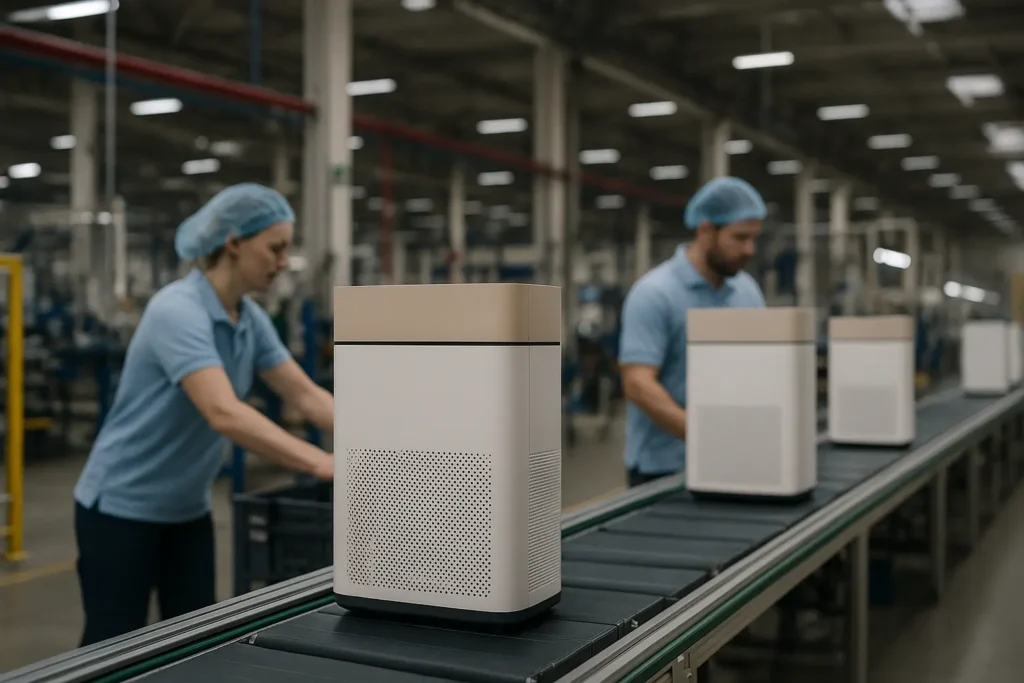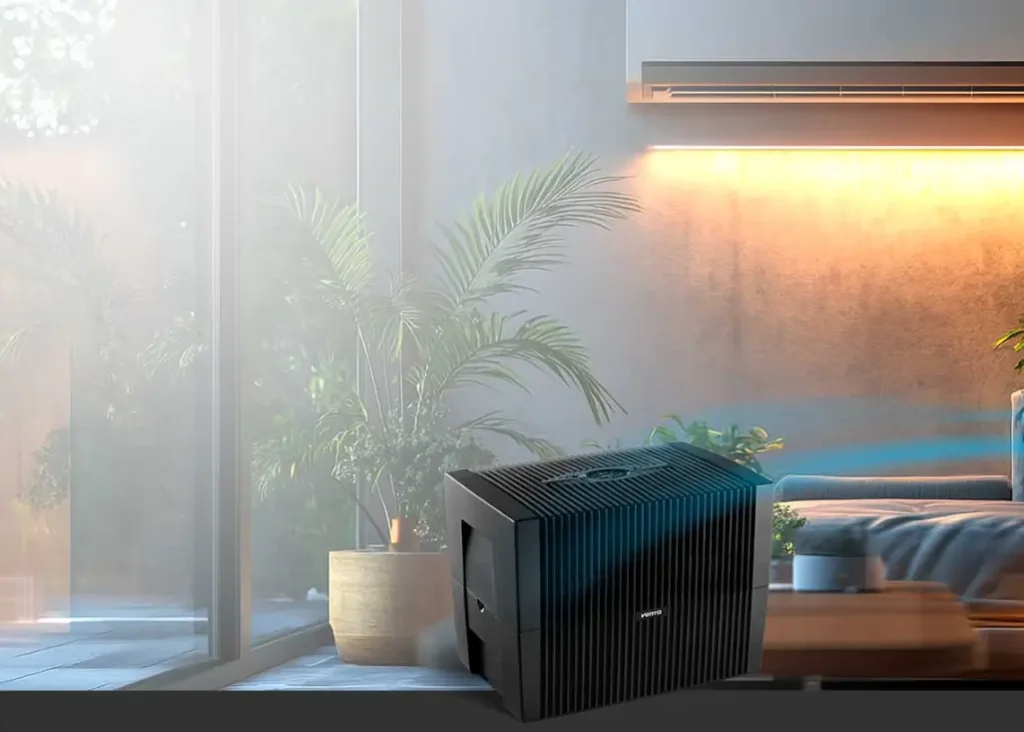Los dolores de cabeza alérgicos son molestos y persistentes. Por eso es esencial obtener un alivio a largo plazo para deshacerse de los dolores de cabeza por alergia . Siga leyendo y conozca todos los remedios posibles para deshacerse de los dolores de cabeza causados por la alergia.
¿por qué tenemos alergias?

Fuente de la imagen: Unsplash
Millones de personas tienen alergias hoy en día. Técnicamente hablando, es su organismo el que decide si una materia o sustancia concreta es un alérgeno. Por ejemplo, usted puede ser alérgico al polen, pero otras personas no.
Por lo tanto, se puede afirmar que estas materias y partículas alergénicas siempre existen en el aire. Sólo depende de su organismo si puede o no tolerar estos cuerpos extraños.
Con los problemas de contaminación atmosférica que tenemos ahora, podemos suponer que su presencia ya es normal. Sinceramente, es bastante imposible eliminarlas por completo del aire. Por desgracia, algunas personas tienen sistemas inmunitarios reactivos. Así que la existencia de estos alérgenos en el aire no es realmente bienvenida.
cuánto duran las alergias
Los dolores de cabeza causados por la alergia se consideran los más exasperantes. Al fin y al cabo, lidiar con el dolor no es lo nuestro. Si el problema no se controla, el dolor de cabeza persistirá.
Afortunadamente, siempre puede mantener a raya estas alergias y los síntomas que las acompañan. Disponemos de varios tratamientos para las cefaleas alérgicas, como el uso de purificadores de aire de grado médico.

Fuente de la imagen: Canva
Factores desencadenantes habituales de las cefaleas alérgicas
Los alérgenos son moléculas que pueden activar el sistema inmunitario reaccionar como si estuviera atacando una amenaza. Sin embargo, estas reacciones pueden ser malas. Al fin y al cabo, algunos de estos alérgenos son inofensivos, como por ejemplo
- ciertos alimentos
- aroma
Sin embargo, algunos alérgenos son bastante nocivos, como el :
- veneno
- ácaros del polvo
- molde
Cuando el cuerpo reacciona a estas sustancias, se produce la alergia. Si tu cuerpo tolera estos estímulos externos, entonces estás bien. Pero si reacciona, las respuestas alérgicas pueden variar, por ejemplo:
- eczema
- asma
- fiebre del heno.
- anafilaxia
Síntomas de la cefalea alérgica
Hay que tener en cuenta que la presión sinusal y la fiebre del heno pueden desencadenar dolores de cabeza. Pero, al mismo tiempo, podría decirse que no se trata de un síntoma habitual de alergia. Concretamente, hay dos dolores de cabeza que están relacionados con las cefaleas alérgicas: las migrañas y las cefaleas sinusales.
Las cefaleas alérgicas son un síntoma de estas alergias. Por ejemplo, un cefalea sinusal se produce cuando los senos paranasales se hinchan, provocando una acumulación de presión. También hay que tener en cuenta las migrañas, que pueden ser de naturaleza genética o ambiental.
cómo aliviar los dolores de cabeza por presión sinusal
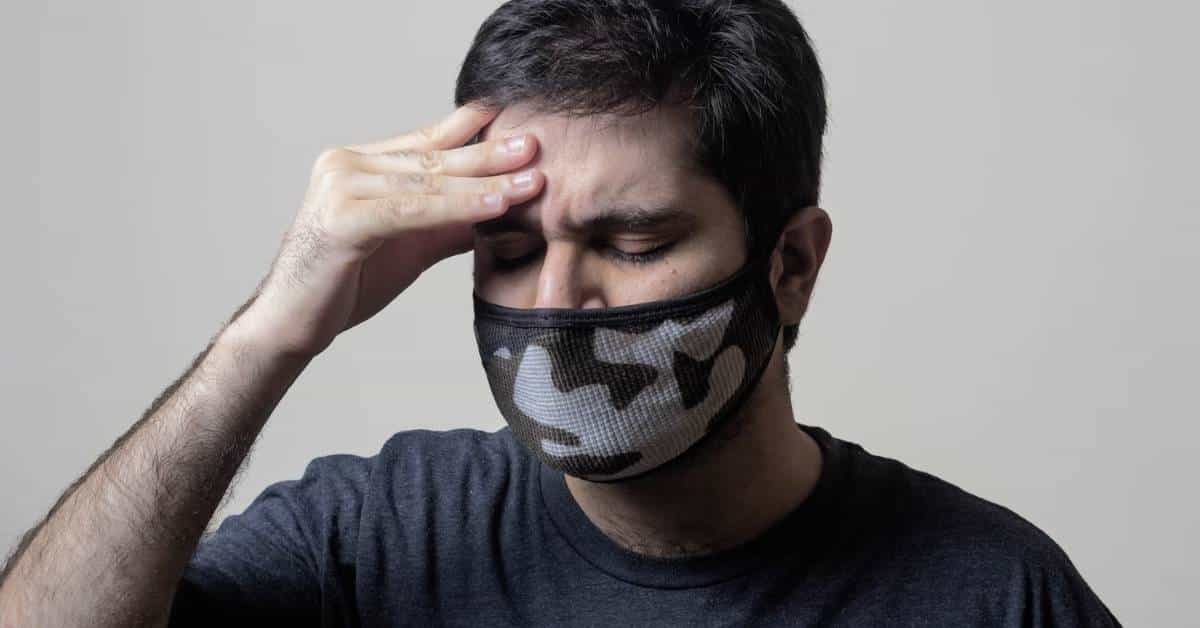
Fuente de la imagen: Unsplash
No existen pruebas médicas de que las cefaleas alérgicas puedan provocar complicaciones graves.
Si no te ocupas de las alergias, pueden surgir problemas posteriores. La mayoría de estos síntomas están bien relacionados con las alergias nasales. La sinusitis crónica es uno de estos síntomas. Esta última se produce cuando hay una congestión prolongada y provoca obstrucciones en los senos paranasales.
Las infecciones sinusales crónicas pueden provocar dolores de cabeza. Si persiste incluso con tratamiento, entonces debe visitar a un especialista. Se necesitan pruebas para diagnosticar la naturaleza de su alergia. Además, los médicos tienen que revisarte los senos paranasales y ver si es necesario o no que tomes remedios más fuertes.
Normalmente, los dolores de cabeza relacionados con la alergia no son mortales. Pero aun así requieren tratamiento porque pueden alterar tu rutina diaria.
¿Cuánto tardan en remitir las cefaleas alérgicas tras la eliminación de los alérgenos?
Dado que ha eliminado totalmente los alérgenos de su espacio, es muy probable que sus síntomas remitan al cabo de unos días. Por supuesto, el tiempo necesario para que sus alergias desaparezcan varía en función de varios factores.
Por ejemplo, tomar medicamentos podría acelerar su recuperación. Descansar adecuadamente también debería aliviar los síntomas de la alergia. Una vez más, hay que insistir en que no exponerse a los alérgenos puede hacer que te sientas mejor.
¿Cómo evitar las alergias?
Si sufre dolores de cabeza por alergia y otros síntomas de las alergias, debería plantearse adquirir un purificador de aire. Verá, estos purificadores de aire están diseñados para capturar las partículas que contaminan el aire en un espacio determinado.
Técnicamente, algunas o la mayoría de estas partículas pueden desencadenar alergias y otras complicaciones respiratorias. Si dejas que permanezcan a tu alrededor, existe la posibilidad de que sufras ataques repetidos.
Los métodos de limpieza ordinarios, como pasar la aspiradora, tienen efectos limitados. Al fin y al cabo, muchos alérgenos se transportan por el aire. Por eso, lo mejor es contar con un dispositivo que pueda capturar estas partículas para no inhalarlas.
Tratar las cefaleas alérgicas: métodos eficaces
#1 cómo deshacerse del dolor de cabeza por alergia: Consulte a un médico
Un tratamiento completo requiere la intervención del médico. El médico que le atienda diagnosticará los síntomas y le proporcionará los remedios correspondientes. Es importante que consulte a su médico si los síntomas empeoran, aunque ya tenga un purificador de aire en casa.
Haz lo mismo si los dolores de cabeza que padeces van acompañados de síntomas como sensibilidad al ruido o a la luz. No son normales y requieren atención médica para determinar sus causas subyacentes.
#2 cómo deshacerse del dolor de cabeza por alergia: Use analgésicos de venta libre
Si tienes dolores de cabeza por alergia, puedes tomar analgésicos, como ibuprofeno o aspirina, para aliviar el dolor. Estos analgésicos deberían ser capaces de mitigar el dolor que estás experimentando.
Ten en cuenta que debes utilizar estos analgésicos con moderación. De hecho, sería mejor que consultaras primero a tu médico antes de tomarlos. Debes conocer la dosis correcta, así como la frecuencia de uso.
Además, los analgésicos no son soluciones a largo plazo para las alergias y sus síntomas correspondientes. Sólo sirven para eliminar el dolor causado por las cefaleas.
#3 cómo deshacerse del dolor de cabeza por alergia: Tratamiento con agua
Hay varias cosas que el agua puede hacer para ayudar a eliminar el dolor de cabeza que está experimentando. Prueba las siguientes estrategias caseras:
- Coge una toalla húmeda y caliente y aplícatela en la cara.
- Bebe mucho líquido para disminuir la mucosidad que provoca la congestión nasal; eso debería aliviarte el dolor de cabeza.
- Hierve agua y ponla en un cuenco. Inhala el vapor mientras te cubres la cabeza con una toalla para evitar que se extienda.
#4 cómo deshacerse del dolor de cabeza provocado por la alergia: Elimine los alérgenos de su hogar
Por supuesto, la mejor solución para sus dolores de cabeza relacionados con la alergia es evitar cualquier exposición a los alérgenos. Mientras sufras alergias, seguirás siendo susceptible a sus síntomas, como los dolores de cabeza.
Por ejemplo, debe cerrar las ventanas y puertas si es alérgico al polen. También es posible que tenga que limpiar de vez en cuando si es alérgico al polvo, la caspa de las mascotas y otros contaminantes del aire. Si puede eliminar la fuente de la alergia, mejor. Le ayudará a respirar mejor sin tener que preocuparse por los ataques de dolor de cabeza.
#5 cómo deshacerse del dolor de cabeza por alergia: Añadir purificador de aire para deshacerse de los dolores de cabeza de alergia
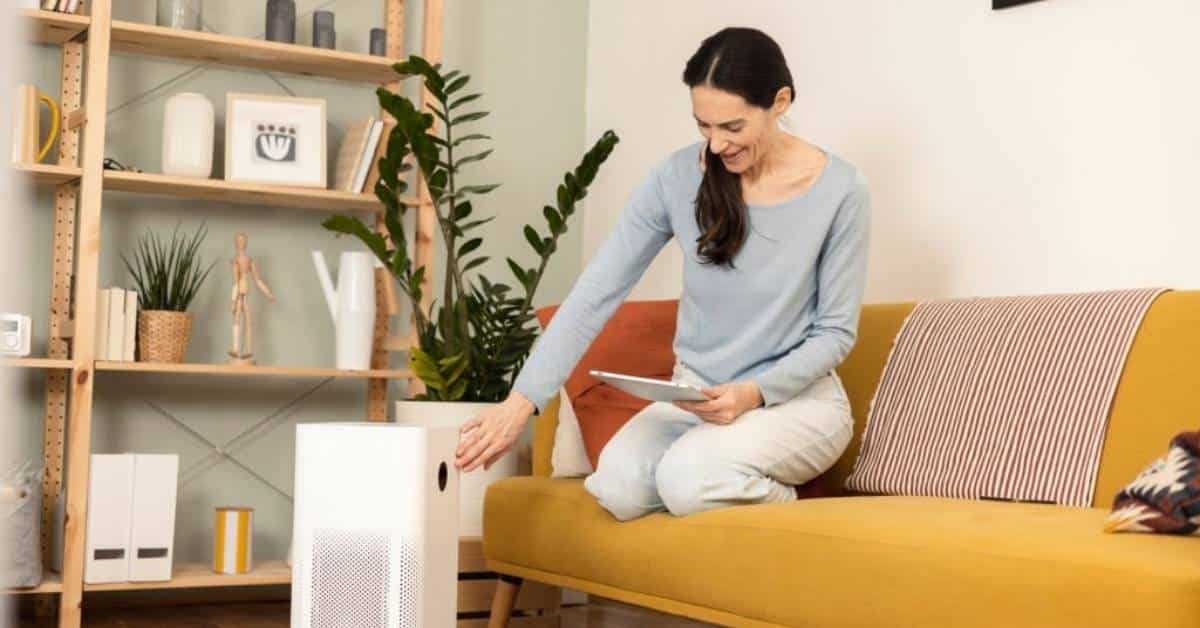
Fuente de la imagen: iStockphoto
Si sufre dolores de cabeza por alergia debido a los contaminantes del aire, es hora de que introduzca un purificador de aire en sus espacios vitales. Fabricantes de purificadores de aire diseñan sus limpiadores para capturar distintos contaminantes atmosféricos.
Sin embargo, no todos los purificadores de aire son iguales. Pero los mejores garantizan la captura de la mayoría de los alérgenos transportados por el aire. Al mismo tiempo, también pueden hacer frente a algunas bacterias, virus y agentes patógenos. Mediante el uso de filtros de alta calidad, estos purificadores de aire pueden mantener su aire interior libre de elementos causantes de alergias.
Siga leyendo para saber más sobre estos purificadores de aire y cómo pueden ayudarle a librarse de los dolores de cabeza provocados por la alergia.
¿cómo proteger su casa contra las alergias?
Casi todas las partes de su casa son propensas a la infestación de alérgenos. Eso es prácticamente cierto. Concretamente, éstas son algunas de las zonas en las que puede inhalar estos cuerpos extraños nocivos.
Síntomas de ácaros en la cama
Tu dormitorio no está a salvo de los alérgenos. Los ácaros del polvo, por ejemplo, pueden proliferar en el colchón y la ropa de cama. Por lo tanto, es esencial que limpie regularmente sus instalaciones para dormir. Además, también debe revisar el mobiliario, las ventanas y el suelo de su dormitorio. El polvo y las esporas de moho pueden acumularse en ellos con el tiempo.
Sala de estar
Los salones son los lugares de mayor tránsito humano. Al fin y al cabo, la gente viene y se queda allí. Le guste o no, los humanos tienden a traer diferentes partículas y sustancias del exterior. Cada vez que abra la puerta, entrarán en su salón partículas, sustancias químicas y de combustión. Además, no olvides que tus mascotas sueltan caspa y pelo que podrían desencadenar tus alergias.
Cocina
Es uno de los lugares donde se cocina y se preparan los alimentos. Pero, al mismo tiempo, también puede albergar distintos tipos de sustancias que provocan alergias. El humo procedente de la cocción de los alimentos puede desencadenar asma y alergias. Mientras tanto, los frigoríficos, fregaderos y encimeras son propensos al crecimiento de moho. Aparte de los purificadores de aire, hay que limpiar la cocina con regularidad.
¿Por qué es importante depurar los alérgenos?
Las alergias no son tan agradables al tacto. Producen síntomas molestos, como estornudos constantes, sibilancias y tos.
Por supuesto, las alergias también pueden desencadenar dolores de cabeza. El nivel de dolor puede variar, pero es innegable que hasta cierto punto pueden ser insoportables. Las cosas pueden empeorar si no abordas el problema. Si no quieres sufrir estos síntomas, lo mejor que puedes hacer es eliminar de raíz las causas de tus alergias.
La mayoría de las alergias están causadas por alérgenos transportados por el aire.
Lamentablemente, no pueden limpiarse por medios ordinarios. Sólo dispositivos especializados, como los purificadores de aire, pueden regular estos alérgenos y minimizar su presencia en sus habitaciones y espacios vitales.
cosas para ayudar a las alergias en casa
¿Por qué es importante un purificador de aire para mejorar la calidad del aire?
La calidad de su aire interior es susceptible de contaminarse. Esa es la verdad que tienes que saber. Desde las fuentes externas, como la combustión de los vehículos, hasta las internas, como los productos domésticos y las sustancias químicas de limpieza, muchas cosas pueden comprometer el aire que respiras.
Por supuesto, hay varias formas de prevenir la contaminación del aire interior. Por ejemplo, abriendo las ventanas y limpiando regularmente.
Pero no hay nada más eficaz que utilizar purificadores de aire. El trabajo de estos purificadores de aire es bastante sencillo: eliminar diversos contaminantes del aire. Estos dispositivos tienen filtros que pueden capturar varios tipos de contaminantes en el aire, evitando que floten en sus habitaciones.
Los purificadores de aire son beneficiosos porque ayudan a mantener un entorno respiratorio adecuado en el interior de sus hogares, oficinas y edificios. Específicamente, Purificadores de aire con certificación AHAM también evitan la posible transmisión de enfermedades y afecciones respiratorias. Por supuesto, funcionan bien contra los alérgenos, que es lo que más nos preocupa aquí.
¿Son seguros los purificadores de aire para las cefaleas alérgicas?
Sí. Por supuesto.
Por supuesto, estoy hablando de purificadores de aire basados en filtros. Estos purificadores de aire sólo utilizan medios filtrantes físicos para capturar los contaminantes del aire. No liberan residuos ni emisiones que puedan afectar a su salud o a la calidad interior.
Teniendo esto en cuenta, tenemos que destacar que debe desconfiar de los generadores de ozono. Los generadores de ozono también se promocionan como purificadores de aire. Pero no utilizan filtros. En su lugar, liberan gas ozono para "neutralizar" los contaminantes del aire.
Aunque esta tecnología se utiliza en la filtración de agua, su eficacia en la filtración de aire es cuestionable. Al mismo tiempo, el ozono es un irritante pulmonar. La exposición a este gas provocaría más complicaciones respiratorias.
¿Cómo actúan los purificadores de aire para eliminar los dolores de cabeza provocados por la alergia?
Como ya se ha mencionado, las alergias están causadas por cuerpos extraños a los que su sistema inmunitario es bastante sensible. Estos alérgenos se presentan en diferentes formas, como el polvo, el polen y el humo.
Los purificadores de aire eliminan esos alérgenos del aire. No los destruye ni los mata, sino que los atrapa en sus filtros. De este modo, podrá respirar aire fresco y limpio.
Fundamentalmente, los purificadores de aire no son un tratamiento para los dolores de cabeza causados por la alergia. En su lugar, eliminan la fuente de sus alergias para que ya no sienta sus síntomas. Con estos purificadores de aire, no tendrá que preocuparse de sufrir alergias en su propio espacio. Es un alivio que nunca debería perderse.
Cómo eliminar los dolores de cabeza causados por la alergia con un purificador de aire: Paso a Paso
Los siguientes pasos muestran cómo un purificador de aire elimina los alérgenos. Mediante el uso de filtros sencillos pero eficaces, un purificador de aire puede capturar diferentes contaminantes que pueden causar alergias.
- El purificador de aire utiliza su ventilador para aspirar el aire de su interior.
- Una vez que el aire atraviesa el purificador de aire por su entrada, el aire pasará por varias capas de filtros.
- El filtro HEPA captura diferentes contaminantes microscópicos, mientras que el filtro de carbón adsorbe (no absorbe) productos químicos, sustancias y compuestos orgánicos volátiles.
- Después de que el aire pase por los filtros, se devolverá a la habitación.
Este proceso se repite para garantizar que no queden partículas contaminantes en el aire. Tiene que repetir este proceso para que las partículas recién introducidas también sean capturadas.
Aspectos a tener en cuenta al comprar un purificador de aire para las alergias
No todos los purificadores de aire son iguales. Los alérgicos deben tener en cuenta las siguientes consideraciones a la hora de elegir un purificador de aire.
- Filtro HEPA - El filtro HEPA actúa como "filtro primario" de su purificador de aire. Se encarga de capturar el 99,9 por ciento de los contaminantes que son tan pequeños como 0,3 micras. En esta escala se encuentran los alérgenos invisibles, como el polen, las esporas de moho, los patógenos y el polvo. Por lo tanto, es importante que el purificador de aire que adquiera tenga este filtro en particular.
- Filtro de carbón - Además del filtro HEPA, el purificador de aire debe tener un filtro de carbono. Después de todo, algunas personas son alérgicas a ciertos productos químicos, sustancias y olores. Este filtro en particular ayuda a tratar esos contaminantes gaseosos y no sólidos para que no desencadenen sus alergias.
- CADR - La Índice de entrega de aire limpio (CADR) especifica la "potencia" global del purificador de aire. Concretamente, indica la cantidad de aire que puede procesar en un espacio y un tiempo determinados. Básicamente, cuanto mayor es el número CADR, más potente es el purificador de aire. Si su casa es grande o quiere purificar un espacio grande, necesita un purificador de aire con una clasificación CADR alta.
- Eficiencia energética - También querrá un purificador de aire que funcione sin disparar sus facturas de electricidad. De este modo, podrá hacer funcionar el aparato de forma continua, lo cual es esencial si su zona está llena de alérgenos en el aire.
Purificadores de aire para eliminar los dolores de cabeza causados por la alergia
Desde los síntomas de las alergias hasta los problemas causados por la contaminación del aire interior, los siguientes purificadores de aire pueden ayudarle. Estos purificadores de aire tienen una alta calificación debido a su eficacia para eliminar los contaminantes que causan alergias.
1. Purificador de aire para 2000 pies cuadrados
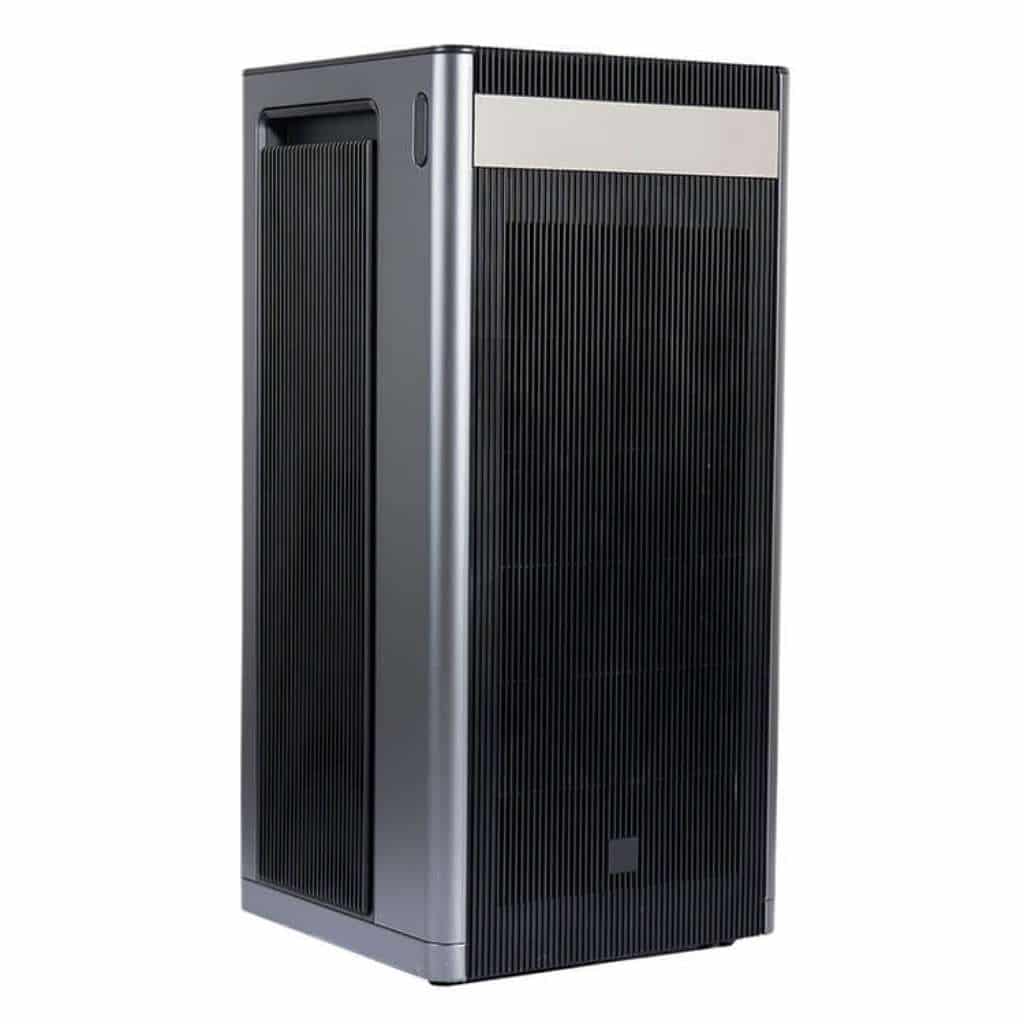
Fuente de la imagen: HisoAir
El modelo HA-1968 de HisoAir es definitivamente una gran opción para un purificador del aire. Diseñado para hacer frente a espacios tan grandes como 1.900 pies cuadrados, este aparato se ha integrado con diferentes filtros que podrían eliminar diferentes tipos de alérgenos. Su filtro de HEPA solo asegura que los alergénicos comunes y estacionales, tales como polvo y polen, escaparan de su asimiento. También viene con una luz UVC que se ocupa de las bacterias y ciertos tipos de patógenos.
El funcionamiento de este purificador de aire es bastante sencillo. Está diseñado para adaptarse incluso a los usuarios de purificadores de aire primerizos. También es un purificador de aire silencioso, lo que lo convierte en una opción adecuada para dormitorios y entornos sensibles al ruido. Además, incluye varios sensores que mejoran su funcionamiento. Por ejemplo, su sensor de PM2,5 y su sensor de humedad le permiten conocer los cambios en la calidad del aire interior.
| PROS | CONS |
|
|
2. HisoAir Modelo HA-138
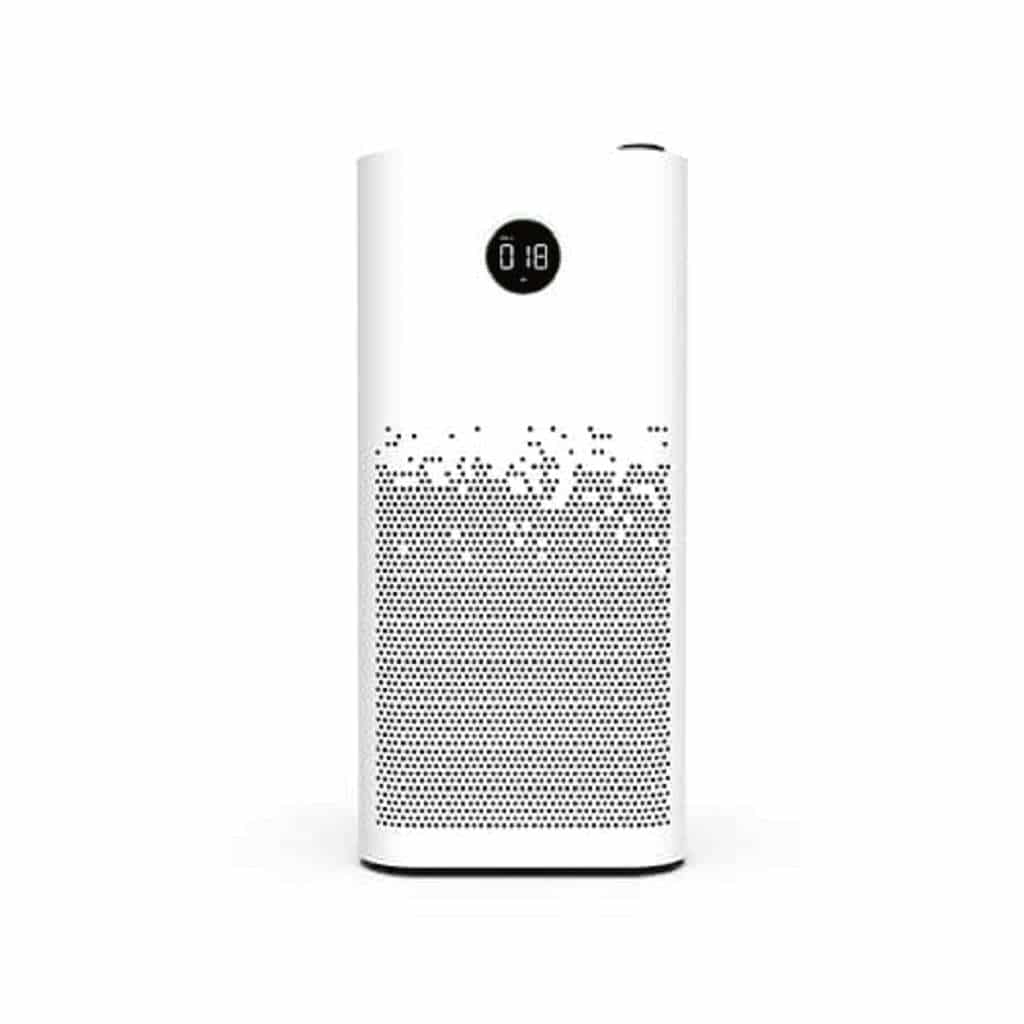
Fuente de la imagen: HisoAir
Otro purificador de aire que se adapta a espacios grandes es el modelo HA-138 de HisoAir. Es capaz de purificar áreas de hasta 900 pies cuadrados, lo que indica que se puede utilizar para aplicaciones de varias habitaciones. Este purificador de aire tiene una alta calificación CADR, lo que significa que puede procesar el aire de la manera más eficiente y rápida posible. Todos los filtros de alta calidad de HisoAir están integrados en este dispositivo, por lo que puede asegurarse de que captura los alérgenos fácilmente.
También cabe destacar que el modelo HA-138 de HisoAir es un aparato de bajo consumo. Incluso si decide hacerlo funcionar continuamente, no perjudicará sus facturas de electricidad. Además, este aparato está diseñado para durar más tiempo en servicio. Por lo tanto, es una gran inversión, especialmente si en su hogar hay muchas personas alérgicas.
| PROS | CONS |
|
|
3. HisoAir Modelo HA-1601
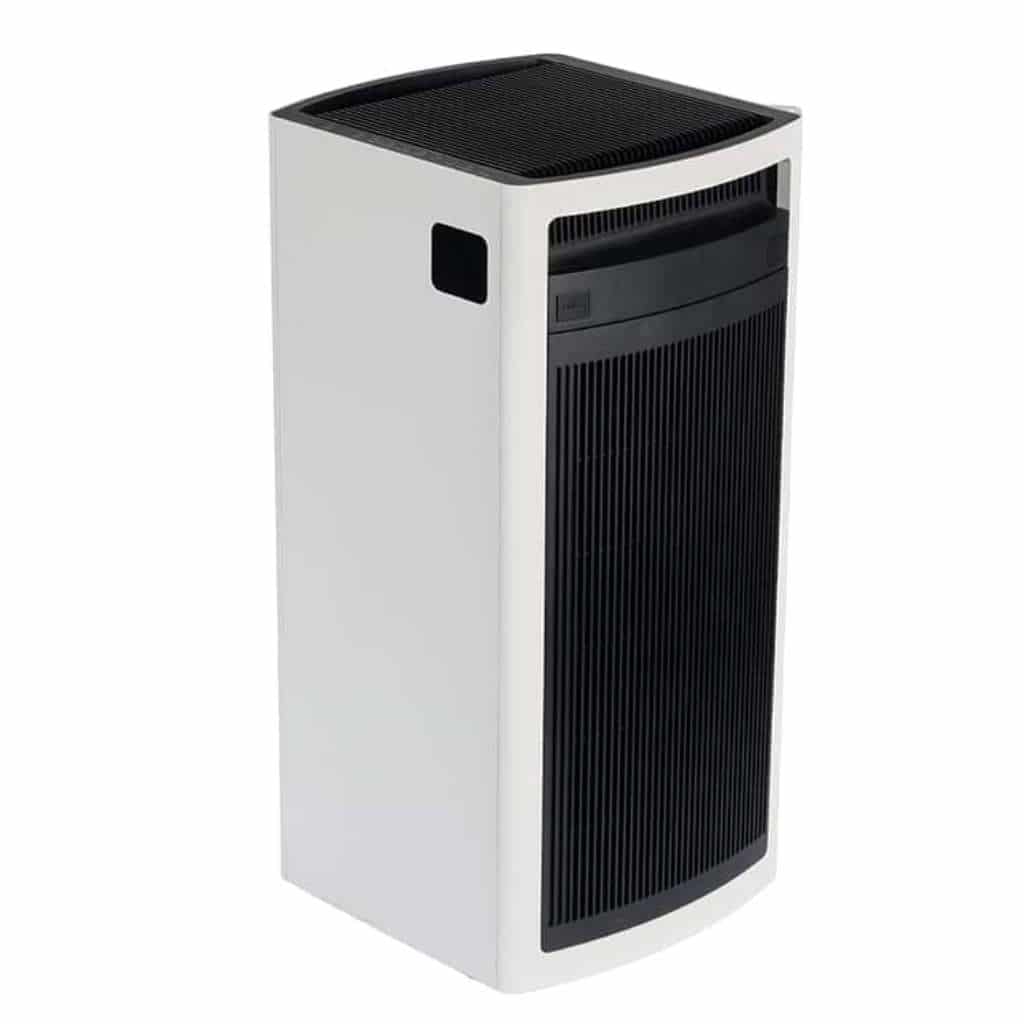
Fuente de la imagen: HisoAir
También debería echar un vistazo al modelo HA-1601 de HisoAir. Esta unidad está pensada originalmente para aplicaciones industriales y comerciales. Sin embargo, también puede utilizarlo en su hogar, asegurándose de que no sufra alergias. Por su diseño, este purificador de aire tiene todos los filtros esenciales para eliminar diferentes tipos de contaminantes del aire. Si es alérgico a ciertos olores, su filtro de carbón puede ayudarle.
Por supuesto, un purificador de aire es un aparato ergonómico. Tiene controles sin complicaciones que le permiten configurarlo para que se adapte a sus necesidades. Al igual que otros purificadores de aire HisoAir, esta unidad tiene un aspecto moderno, lo que le permite colocarlo en sus espacios vitales. No irrita los ojos, lo que es una ventaja para este purificador de aire.
| PROS | CONS |
|
|
¿Cómo prevenir las cefaleas alérgicas tras la extracción?
No es agradable padecer alergias de vez en cuando. Por lo tanto, es crucial que usted será capaz con la fuente desde el primer momento. Como dice el refrán, más vale prevenir que curar.
Las alergias y los síntomas que las acompañan acabarán reapareciendo si no se ataja su origen. Un purificador de aire solo ayudaría mucho a eliminar los alérgenos, pero seguirían ahí si no puedes arrancar lo que los causa.
Por lo tanto, es importante que identifiques las causas de tus alergias. Una vez que lo hagas, podrás aplicar las medidas necesarias para evitar que vuelvan a aparecer. Las alergias estacionales pueden tratarse limpiando la casa con regularidad y poniéndola a prueba de alergias. Si tienes alergia a los animales domésticos, quizá debas plantearte no volver a adoptar un animal.
Estos pasos son sencillos, pero lo suficientemente eficaces como para aliviar los síntomas de la alergia.
Conclusión
Todas las estrategias que enumeramos aquí deberían poder ayudarle a minimizar los síntomas de alergia que experimenta. Entre ellas, los purificadores de aire se consideran las más eficaces, ya que pueden eliminar las partículas y contaminantes comunes que desencadenan las alergias.
Cuando se trata de purificadores de aire, debe confiar en las prestaciones de HisoAir. Esta última es una marca internacional de purificadores de aire de calidad médica. Sus productos se utilizan habitualmente en espacios gubernamentales, comerciales y residenciales. Visite HisoAir y obtenga más información sobre sus purificadores de aire y lo que pueden hacer por usted.
Visite también nuestros otros blogs.


